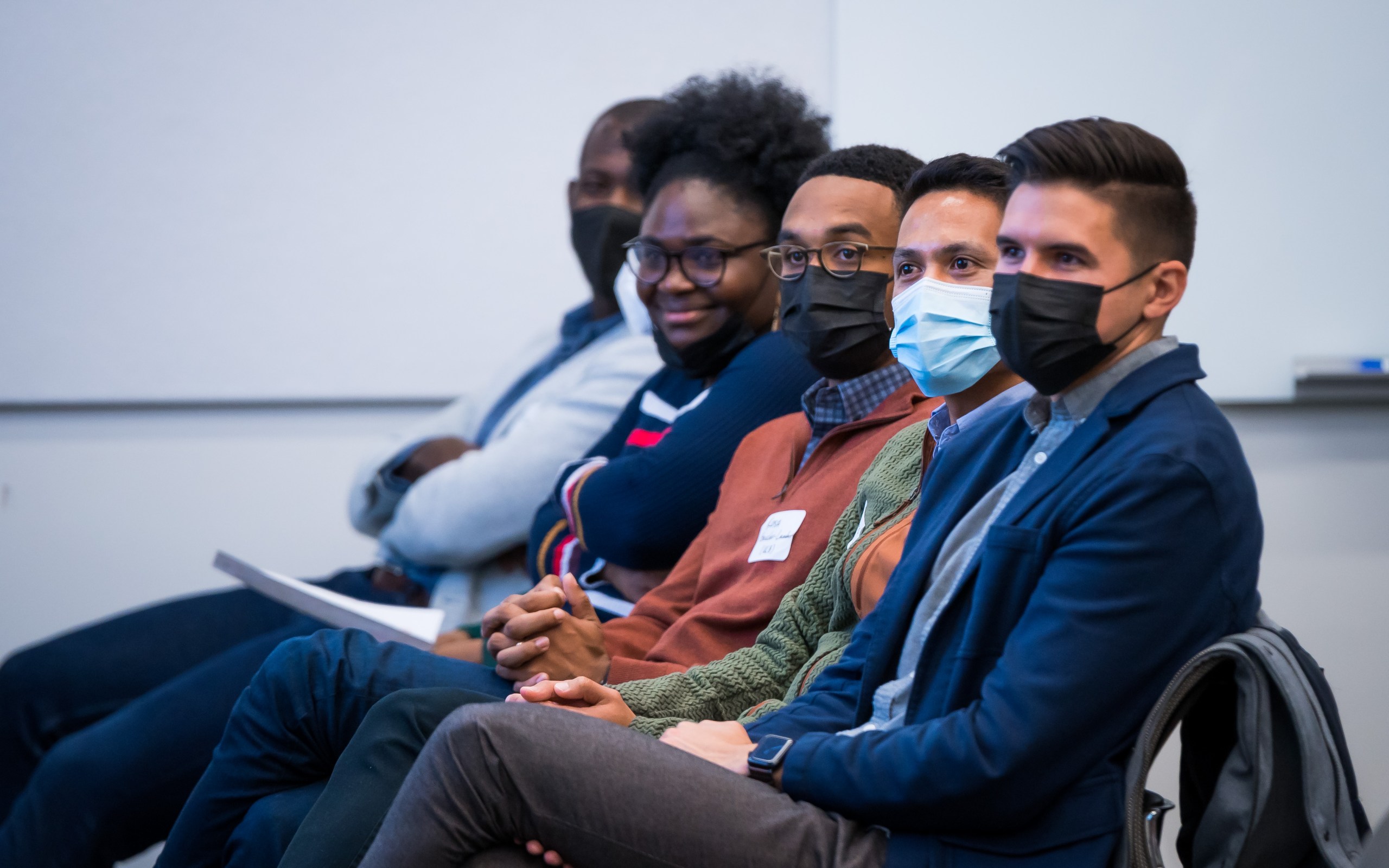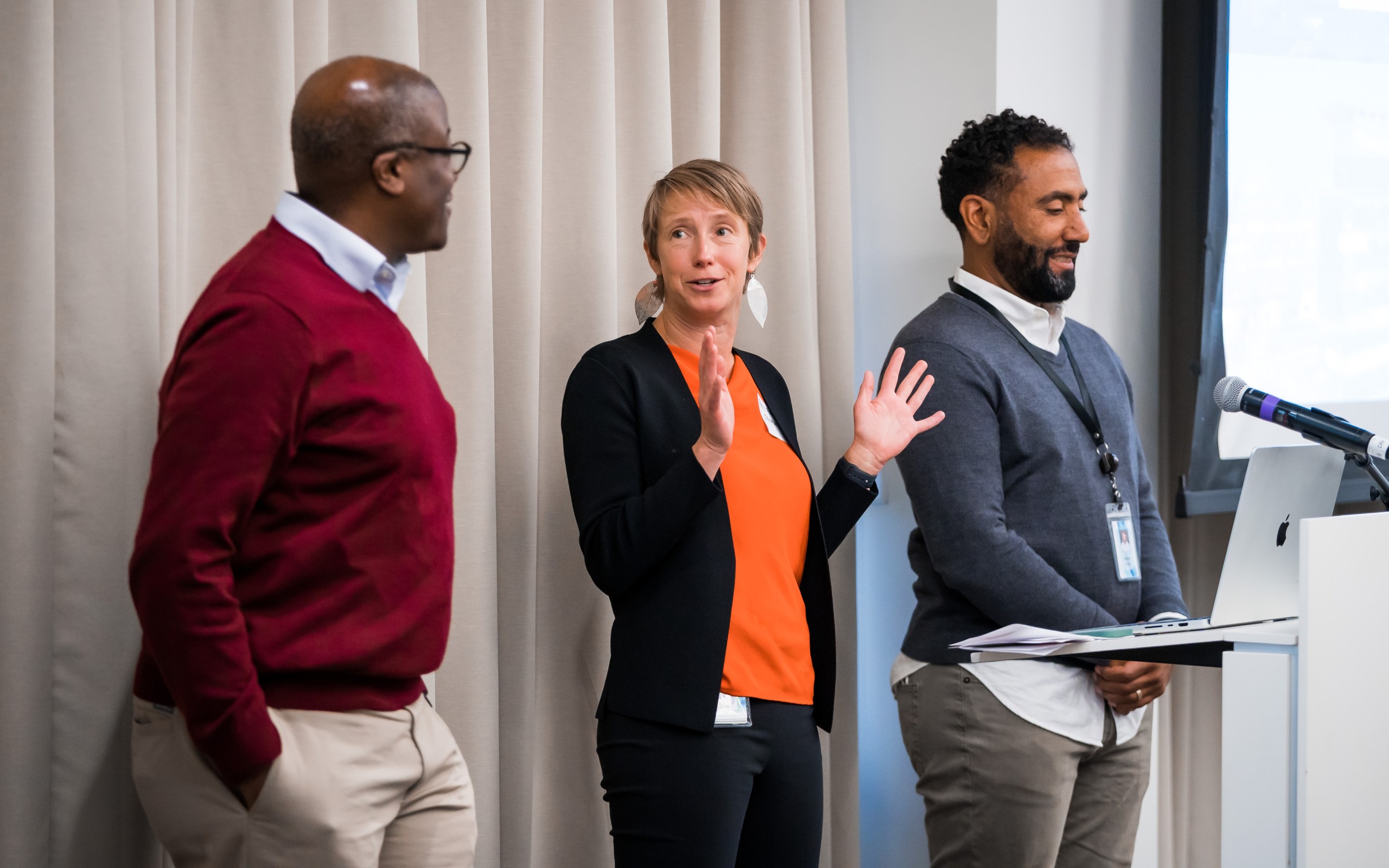Location, location: Researchers map proteins across human cells
Organelle Profiling, developed by CZ Biohub San Francisco scientists, is a new tool to understand cells at an unprecedented level of detail
In the summer of 2020, after the murder of George Floyd by a police officer in Minneapolis, many institutions around the country were reflecting on how systemic racism perpetuates inequality. But for Polly Fordyce, Aaron Streets, and Jason Sello, professors at three Bay Area research universities, self-reflection was not enough. They wanted to take concrete action in their own communities to diversify faculty in biological and biomedical sciences.
At the same time, similar discussions were being held at the Chan Zuckerberg Biohub San Francisco (CZ Biohub SF), a nonprofit research institute. “There was a strong effort at the Biohub, thinking of ways to make an impact to address systemic racism and underrepresentation in STEM,” says William Burkholder, Director of Scientific Program Management at CZ Biohub SF.
So Fordyce, Streets, and Sello, who are all CZ Biohub SF-funded Investigators, launched an initiative called the Stanford.Berkeley.UCSF Next Generation Faculty Symposium as a platform to increase the diversity of faculty in STEM fields (science, technology, engineering, and math). They decided to focus on the recruitment stage of the process, which, in their experience, was a key bottleneck.
“There is no shortage of amazing candidates, but recruiting those candidates takes more than a sentence at the bottom of an advertisement saying they are encouraged to apply. The traditional ways in which we’ve relied on to get people to apply to jobs are clearly not reaching all of the people that we want to reach,” says Fordyce, an associate professor of genetics and bioengineering at Stanford. “The goal of the Symposium is to showcase faculty candidates with a demonstrated track record of success in research and in service and leadership and make sure that they are on the radar of different faculty search committees. It also provides our local institutions with the opportunity to convince these applicants that they will provide a supportive environment that allows them to launch creative and ambitious research programs.”
Spoiler alert: the Next Generation initiative has been a stellar success. This year’s Symposium, now in its fourth year, will be held virtually on November 17. “Through our Investigator Program, we provided additional resources to our partner universities for faculty recruitment. This dovetailed nicely with the NextGen Symposium’s goal of highlighting rising-star faculty candidates,” Burkholder said. “Additionally, the new faculty that were hired are training the next generations of grad students and postdocs, so there’s a compounding effect. This program will have a profound impact for decades.”
What’s more, similar programs have since been launched by other institutions, some inspired by the Next Generation initiative. Some of these include MIT’s Rising Stars Workshop, the University of Chicago Biological Sciences Division’s Rising Stars Symposium, UCSF’s Leading Edge Symposium, and the Intersections Science Fellows Symposium, a multi-institution effort.
While there is general agreement that diversity in higher education benefits a diversifying society, progress has been slow. Historically underrepresented minority groups make up about 30% of the U.S. population, but just 11% of the graduate students in STEM fields and 5% of tenure-track faculty positions at the top 50 research institutions, according to a 2021 report by the National Science Foundation.

Attendees of the 2022 Next Generation Faculty Symposium at CZ Biohub San Francisco (Credit: Marco Sanchez, UCSF Documents and Media)
The NextGen Symposium’s motivation is eloquently stated in its vision statement: “This lack of diversity in STEM faculty is at the core of our national dilemma. It is both a symptom of historic racism in our country and a cause that perpetuates the system.”
Streets, a professor of bioengineering at UC Berkeley, added that the COVID pandemic has brought the issue into focus. “In our field,” he says, “our impact relies incredibly heavily on public trust of our scientific institutions. And it couldn’t be clearer over the past years how hard it is to generate that trust if the scientists don’t look like or represent the diversity of the people who are benefiting from science.”
He adds that a diverse faculty also improves the quality of education for students: “This is not just about increasing the diversity of faculty for diversity’s sake. Having a range of life experience and an understanding of, or sensitivity to, a wide range of cultures, so that every student can get the most out of their education, is part of the job description,” he says.
With Biohub support, the NextGen organizers pulled the first event together quickly. They knew that talented graduate students and postdocs from underrepresented groups were plentiful but that they were not making it into the applicant pool. So their aim was to enrich the pool by putting a targeted call.

(from left) Jason Sello, Polly Fordyce, and Aaron Streets are co-lead organizers of the Next Generation Faculty Symposium. (Credit: Marco Sanchez, UCSF)
One aspect of “faculty search committees” is that often they do not actually do a search, according to Sello, a professor of pharmaceutical chemistry at UCSF. “’Search’ implies that there’s going to be some action taken to identify candidates, but historically it’s been sort of a passive approach to hiring,” he says. “That’s led to this false idea, ‘Oh, well, there just aren’t any qualified minority candidates out there.’ So our motivation and attitude is, ‘You guys don’t want to search? We’ll search.’”
For the first symposium, the team sent out emails and advertised on social media, with the goal of selecting a dozen early-career scientists, pairing them with mentors in their field, then giving them an opportunity to present a 10-minute science talk to an audience that would include recruiters. To their astonishment, they received about 270 applications for the 12 slots, and the organizers “decided to choose an additional 18 honorable mentions because the pool was so deep and rich,” Fordyce says. In the end, the virtual event was attended by 450 people, many of them looking to hire.
The speakers were chosen based on their scientific excellence and significant personal contributions to increasing equity and inclusion. Of the participants, seven now have tenure-track positions at Stanford, two have faculty positions at UCSF or UC Berkeley, and five others have tenure-track positions at research universities across the country.
CZ Biohub SF supported some of these positions through its Investigator Program, which provides $1 million in unrestricted research funding over five years to faculty members at Stanford, UC Berkeley, and UCSF. Of the more than $100 million the Biohub has committed since 2020 to support Investigators at the three universities, $15 million to date has been committed towards helping to recruit new faculty, with a focus on increasing diversity.
“The goal of the Next Generation Faculty Symposium was to demonstrate that if you do recruitment the right way, then you can generate an applicant pool that’s stacked with numerous scientists of color representing a vast array of backgrounds and scientific interests,” Streets says. “And then you can allow regular faculty search committee processes to run their course, and you don’t have to necessarily inject a consideration of a candidate’s identity into the process, or have to choose between the false dichotomy of ‘diversity or excellence.’ ”
“These candidates were highly sought after from other universities, so the Biohub support was instrumental in securing their recruitment,” Streets says.
For 2022, they decided to alter their strategy to support the faculty that had been hired in the previous two years. “We called it the This Generation Faculty Symposium, for the newly hired faculty from Stanford, UCSF, and Berkeley to get together and provide a short overview of their research, with the idea that this was an opportunity to advertise the new scientific directions they are pursuing and then have peer mentoring sessions in the afternoon,” Fordyce says.
This year, they’re going back to the original Next Generation format. Again, they’ve received a large number of applications. “The success is really mind boggling, but this is just the beginning of the impact of these types of programs,” says Streets. “These are all new labs, and they’re going to be here for a long time.”
Organelle Profiling, developed by CZ Biohub San Francisco scientists, is a new tool to understand cells at an unprecedented level of detail
Learn More
In the last couple decades, Malaysia has emerged as a global hotspot for neuroinfections such as encephalitis. Now a team from Universiti Malaya is...
Learn More
Collaborations between CZ Biohub San Francisco and the Global Fund empower Burkina Faso to develop pathogen genomics testing capacities
Learn More
Stay up-to-date on the latest news, publications, competitions, and stories from CZ Biohub.
Marketing cookies are required to access this form.